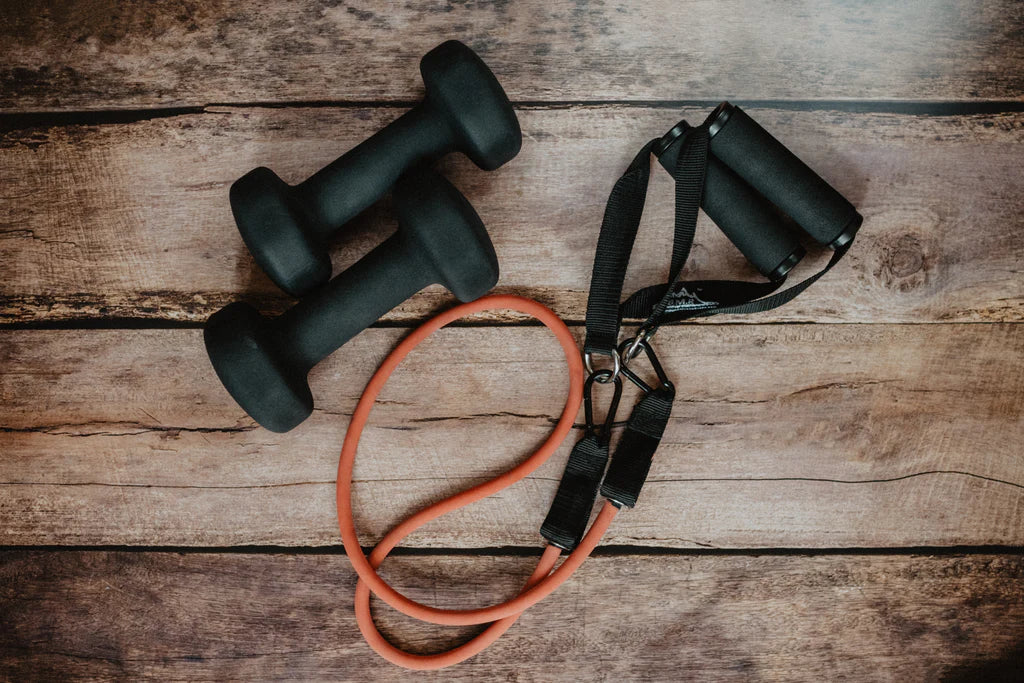Keeping healthy by avoiding skin infections is a concern of every competitive wrestler
Competitive wrestlers are at risk of contracting and spreading bacterial skin infections every time they step on the mat. Bacteria love to grow and spread in environments that are warm and damp. Precisely the kind of conditions prevalent in wrestling rooms. Bacteria also love to spread on equipment like that headgear or knee pad you just took off during practice, wiped your face, and threw down on the mat that everyone was dripping sweat on. And let's not forget your clothes either. Bacteria know no boundaries. They can get in between and live in the fabric of your clothing if not treated.
Skin infections such as ringworm (fungus), impetigo (bacteria), herpes (virus) and pink eye (conjunctivitis) are not uncommon in contact sports. The constant skin contact required for training and competition can easily be a medium for harmful bacteria to spread from one athlete to the next. Competitive wrestlers need to take specific precautions to avoid infection.
PREVENTING SKIN INFECTIONS

In the Shower
- Do not lather directly under the flow of water. Allow soap to remain on skin momentarily.
- Use a loofah (mesh sponge) but not too vigorously. Vigorous scrubbing will cause small abrasions to the surface of the skin allowing penetration by the sources of infection.
- Wash the back of the neck and hairline thoroughly. The collar tie is responsible for the overabundance of skin infections found here. Our hands touch everything in the wrestling room including the mats, our bodies, our opponent’s body, and anything else you might pick up. Everything collected by our hands is transferred to the back of our opponent’s neck. Wash this area twice.
- Wear shower shoes. Athlete’s foot is caused by the same Tinea (fungus) that causes ringworm.
- Do not share towels and wash towels after each use.
- Dry off thoroughly.
- Wear loose fitting clothes to allow your skin to breathe.
On The Mat
We also need to protect ourselves on the mats. We all know that the mats are a battlefield. They are a place we go to compete or to train and prepare for competition. Part of this preparation and training should include proper hygiene. Here are a few tips that can help in the room.
- Carry your shoes to practice. When leaving the room for water or bathroom breaks wipe your shoes before entering back into the room. Shoes can be wiped on a towel dampened with a solution from your bucket of mat cleaner. Wet the towel in the bucket before cleaning the mats.
- Athletes who train barefoot should never walk on the floor without proper foot coverings.
- The foot coverings should always be removed before entering the mats.
- Change your shirt often during practice. Once a shirt becomes soaked in sweat, it becomes permeable. Your sweat becomes a vehicle for microbes to pass through your clothing and onto your skin.
- Wear a thick cotton t-shirt or clothing made of synthetic fibers that "wick" the sweat away from the body, helping to keep the skin dry.
- When sitting on the wall do not play with the mats. Wrestlers often lean with their backs against the wall with their hands at their sides touching the edges of the mats along the wall. Take a look at what is in between the wall and the edge of the mat. When was the last time this area was cleaned and when was the last time your wall mats were cleaned?
- Do not train with partners who have skin infections and do not train if you, yourself are infected.
- Cover and treat any trauma to the skin including, cuts, scrapes, and new tattoos. New tattoos are the product of the skin being pierced thousands of times. Always apply an antibiotic ointment or salve before covering for added protection. Of course, bandages are going to fall off during training and will have to be recovered.
- When leaving the room always, always, always, consider yourself contaminated because you are. Shower immediately and properly. If a shower is not available use Defense Body Wipes to hold you over until you can shower.
Don't Forget The Equipment
Having a clean room is also a necessity, but a clean room is more than just mopping the mats. There are many more surfaces that we come in contact with other than floor mats. Consider cleaning the following:
- Wall mats.
- Takedown dummies. (Remove the clothing and launder it and wipe down vinyl surfaces.)
- Throw dummies.
- Crash pads or throw mats.
- Fighters, wipe down your bags, bag gloves, and your hands after wearing bag gloves.
Other useful tips
- Fungi like to live in damp and dark places. Make your room light and dry. A dehumidifier can pull moisture out of your room.
- Battling skin infections is more than just topical. Diet can play a huge role in how healthy our skin is and healthy skin is harder to infect. Here are a few diet and skin care tips
- Keep your blood sugars under control. Aim for blood sugars of 80 mg/dl to 120 mg/dl before meals, and 100 mg/dl to 140 mg/dl at bedtime
- Keep your Hemoglobin A1c at 7% or less (a 3-month average blood sugar test). That prevents dry skin.
- Drink eight glasses of water a day. Of course, when cutting weight, we all would love to have eight glasses of water. However, we just cannot do this. Applying lotion to the skin will help keep it moist.
- Eat whole grains, fresh fruits and vegetables and small amounts of lean protein rather than sugary or fat-laden foods. Keep a balanced diet even when cutting back.
- Rest to increase your body’s resistance. You will catch infections easier if you are worn down.
- Once infected, proper care is required to rid you of the infection and promote healing.
- Do not touch the infection. Wash your hands immediately if you do touch an infection.
- Consult your trainer or physician with all possible infections. The sooner you treat an infection, the less established it would be. The infection will be easier to clear up, creating less damage to the skin.
- Use medicine entirely and as recommended. The infection may still be present even though it may not be visible.
- Use the proper medication for each infection. Using the wrong medicine may make the infection worse. An example of this is using cortisone creams on fungal infections, which help fungus grow.
- Many of us train for hours a day for competition, some are coaches, and some just want to stay in shape. Whatever reason we have to be on the mat, we all share the common threat of skin infections. Preventing, treating, and curing skin infections can be made easier with a little education on the topic.
TREATING SKIN INFECTION

Treating Skin Infections – A Comprehensive Guide
The skin is the largest organ in our body. As an integral component of our immune system it is the first line of defense against harmful microbes. It’s host to a closely-knit ecosystem of bacteria, fungi and viruses. Collectively this ecosystem is known as skin flora or skin microbiome. There are three types of microbial communities that exist within the skin’s flora. -
1. Commensalism –Neutral microbes, i.e. they are neither beneficial nor harmful
2. Mutulistic –Beneficial microbes, hey help keep the skin’s flora in balance
3. Pathogenic –Harmful viruses, bacteria and fungus.
A wound, a break or any vulnerability in this natural defensive barrier, due to any reason, opens the door for contracting serious infection. Pathogens are very good at finding gateways into your body. That is why serious efforts are being put into developing ways to preserve the defensive nature of our skin without causing any harm to the skin flora.
Skin Infection Treatment: Awareness Is the First Step!
The term “Skin infection”is a diverse one with many divisions and subdivisions.
Effective skin infection treatment cannot be administered until right diagnosis has been determined.
It is common to term any skin outbreak as rash. But even a simple skin rash has many variations in clinical dermatology diagnosis. It is important to understand that treatment of skin infections starts with you. Most skin infection cases go without treatment because the patients are ill informed. That is why we have a quick overview for you here.
Bacterial Skin Infection
1. Common Bacterial Infections – Carbuncle, Cellulitis, Boils, Impetigo and Folliculitis
2. Others Include - Erysipelas, Furuncle, Pitted Keratolysis and Paronychia
Fungal Skin Infection
1. Common Fungal Infections - Candidacies or Yeast Infection, Tinea Versicolor and Ringworm Infection
2. Ringworm Infection is further classified as:- Body ringworm, Athlete's foot, Nail ringworm, Scalp ringworm and Jock itch.
Viral Skin Infection
1. Common Viral Infections include -Herpes simplex, Warts
2. Others Include -Molluscum contagiosum, Herpes zoster, Measles
Parasitic Skin Infection
1. Common Infections include – Lice and scabies
2. Others Include - Creeping Eruption
Skin Infection Treatment Guidelines
1. Awareness is the key – Any outbreak on the skin does not necessarily indicate a skin infection. Similarly, ignoring early warning signs can be equally dangerous for treatment of skin infections. It is therefore necessary to be aware of any changes you notice on your body. And, have some basic knowledge about skin infections.
2. Basic Hygiene Habits – Be extremely particular about your hygiene. Almost all skin infections are communicable. To avoid them you need be stringent with you hygiene habits.
3. Seek Help Early – If you find a skin condition aggravating, consult a medical practitioner as soon as possible. A proper skin infection treatment, at right time can save you from a lot of troubles.
4. Be communicative – It requires a very thorough and detailed understanding for diagnosing and treating skin infections. Thus it is important that you communicate everything to your doctor and help him/her follow right skin infection treatment guidelines.
Shop the Defense Soap range here to help treat and prevent skin infections on the ring.





